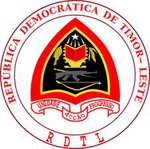The challenges facing rural women, and how thoughtful tech can help
On International Day of Rural Women we discuss Timor-Leste, and how considered tech-for-development programs are contributing to change
It’s no secret that rural communities in developing countries face a unique set of challenges compared to their urban counterparts. Isolation, scarce resources, and poor access to basic services like clean water, education and health facilities are common.
In Timor-Leste, over 70% of the population live in rural areas and there is a significant geographical divide, with rural women and men having lower education, less employment, and higher poverty.¹
Yet the inequality doesn’t end there. Patriarchal social structures reinforce rigid gender norms, resulting in an inequitable division of responsibilities between men and women in both public and private life. In Timor-Leste, women account for 80 percent of unpaid work², reflecting a trend across Asia and the Pacific where it has been found that women do four times more unpaid work than men.
Not only are women bearing the child rearing and household chores, in the majority of rural households, women also provide for their families through contributions to agriculture, fisheries, and raising livestock. That is, they are not only performing the vast majority of unpaid work, they are contributing to the paid work too — though of course on a ‘woman’s wage’.
With the enduring impacts of COVID-19 being felt across the world, rural communities in Timor-Leste have seen the hardships faced by women exacerbated during 2020. It has been reported that:
- Domestic and gender-based violence has become more difficult to report
- Women are less able to access support from their communities and networks due to restricted movement
- Women (and men) are earning less due to reduced work hours. Less money means less independence for women.
- Women have increased childcare and education responsibilities due to reduced school hours. These additional responsibilities add an even greater burden on women, who are already expected to complete extensive domestic and community roles.
Technology: a solution or just another access issue?
If there were a time in history to define the benefits of internet connectivity, 2020 would be it. During COVID-19 lockdowns, it has kept us connected with loved ones, provided news and health updates, and enabled many to continue earning a living through remote working.
However, rural communities with limited access to internet and tech devices, have experienced even greater isolation. In communities where online access does exist, women are still at a disadvantage. A persistent digital gender divide shows women in low and middle income countries are 23 percent less likely to access mobile internet than men.³
So how do we use and design technology to meet the needs of rural women in developing nations, given their challenges are woven deeply into social, economic, and cultural structures? If we are to consider how technology can offer rural women greater opportunities, we must closely assess how these tools can be implemented within localised frameworks.
With more than a decade of experience building tools for low-bandwidth and low digital literacy environments, we’ve learnt a lot about developing technology for rural developing communities across the Asia Pacific. Here are two programs we’ve implemented in Timor-Leste and Solomon Islands that have harnessed technology to benefit women in rural communities, specific to the needs of the participants and their context.
Liga Inan program
In rural areas of Timor-Leste, access to healthcare can be challenging and as a result, babies are frequently born at home. The Liga Inan program aims to improve the likelihood of pregnant women delivering with a skilled birth attendant. Tailored SMS messages are sent to women specific to their stage of pregnancy or motherhood, with the goal of increasing uptake of services such as antenatal care, facility birth, postnatal care, and immunisation.
Given the lower access and use of smartphones among women, Liga Inan makes it possible for older, basic-functionality feature phones to be used. From the outset, the program has been built and tested on low-end devices to accomodate for lower resolution phones and outdated software.
Leveraging the trust built through the Liga Inan program, the platform was used to distribute emergency public health information about COVID-19, and has also been expanded to support a further program, Liga Familia.
Liga Familia used the same messaging system to encourage fathers-to-be to actively support women and their newborn children by engaging in childcare and contributing to home responsibilities. The message content and delivery is based on in-depth behavioural research, designed to gently nudge social change through individual behaviours and challenging assumptions.

Women enrolled in the Liga Inan program are twice as likely to deliver their baby at a health facility, and five times more likely to attend postnatal care.

Olgeta program
In the Solomon Islands, only 20% of people aged 15–24 are employed, yet there is an unmet demand for skilled workers. The Olgeta program aimed to upskill rural women with ‘future-ready’ skills, so that they were more equipped to pursue meaningful work and careers in today’s tech-enabled world.
The technology implementation and course structure was critical to encourage completion. Students were issued with a smartphone for the duration of the program, and for many this was their first experience using this type of device. In-person workshops and training were an important foundation to familiarise participants with phone navigation and enabling them to access course materials including videos, achievement indicators and other interactive features.
The format of the courses was equally as important, given the already heavy burden of family and community responsibilities for the participating women. The program was designed using a micro-learning format which delivers content in short bursts — generally 20 minutes or less — to enable flexible study times to fit in with daily life.
The pilot program showed many positive outcomes including greatly increased confidence using a smartphone, along with many students reporting that the program had broadened their perspective towards potential career aspirations.
We know that the challenges of rural women won’t change overnight. It will take high level structural and policy changes, like ensuring equal representation in leadership, alongside grassroots programs that work to change behaviours and empower individuals.
We will continue to strive for equity in our processes and outcomes, ensuring that we include the voices of rural women, their communities, local leaders and national governments to reduce the inequality bestowed upon them. By approaching these projects with a shared goal, we have the best opportunity to make change happen.
References
[1] Timor-Leste Country Gender Assessment, Asian Development Bank, 2014
[2] Gender-Sensitive Poverty Mapping, World Bank, 2019
[3]State of Mobile Internet Connectivity Report, GSMA, 2019
Catalpa delivers tech-for-development programs across the Asia Pacific. Learn more about Catalpa’s other projects at www.catalpa.io or follow us on social media (or both!).
Have any thoughts you’d like to share? Comment below! 👇🏽














